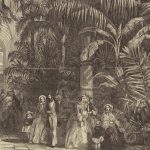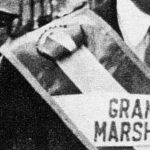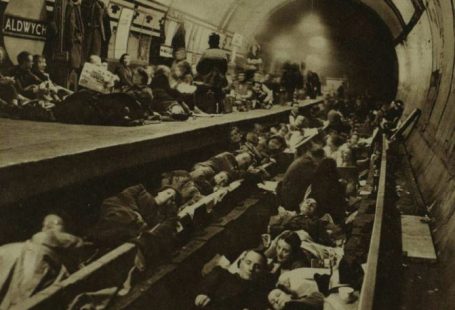
On 15 March 1917, amid the chaos and fury of the Russian Revolution, Tsar Nicholas II, Emperor of all Russia, abdicated from the throne and ended 300 years of Romanov rule. Russians of all classes were on the streets of Petrograd (formerly known as St Petersburg), and Nicholas’ own military had joined the ranks of protestors. How did this monarch fall and a dynasty end? On the anniversary of Tsar Nicholas’ abdication, we will take a look through the British Newspaper Archive at the key events of Nicholas’ reign to understand how the imperial family fell to revolution. During his 23 years as Tsar, Russia endured devastating defeats in both the Russo-Japanese War and First World War, all while the Russian people grew restless of food and fuel shortages and craved a democratic government.
In 1894, after the death of Tsar Alexander Alexandrovitch III, Nicholas II was crowned the new Tsar and Emperor of Russia. Within months, he married Alexandra Feodorovna, and together they would have five children: Olga, Tatiana, Maria, Anastasia, and Alexei. Empress Alexandra was also the granddaughter of England’s Queen Victoria.

The newspapers reported the many visits the Tsar made to England and events when the Tsar and his family met Queen Victoria. In 1900, The Sphere believed that the Queen had a positive influence on Tsar Nicholas. That same year he abolished transportation or exile to Siberia as a form of punishment.

After ten years of reign, Tsar Nicholas II was drawn into a military conflict with Japan between 1904 and 1905. The conflict opened with a surprise torpedo attack from the Japanese navy on the Russian fleet in Port Arthur. The Russian fleet was left disabled and confidence of the Russian people in their military declined. As the war raged on, the Russian military continued to suffer defeats. At the decisive Battle of Mukden in March 1905, almost 90,000 Russian troops lost their lives. By May, Russia was forced to end the conflict.

While Russia was at war with Japan, the Russian people had taken to the streets in St Petersburg in opposition to the Tsar. In January 1905, a general strike had begun throughout St Petersburg and on 22 January a demonstration was organised, led by Father Georgy Gapon. The crowd comprised men, women, and children of all classes. They planned to march to the Winter Palace, where they wanted to submit a list of grievances to the Tsar; however, they were blocked by the Russian military.
The military was ordered to fire into the dense crowds. The Taunton Courier, and Western Advertiser branded the Tsar a coward and said ‘the blood of the slaughter is on his head’. The crowd’s leader, Father Gapon marched in front with a cross, a religious relic, and a portrait of the Tsar. Father Gapon was shot in the shoulder and the portrait was shattered by the barrage of bullets. The event would later be remembered as Bloody Sunday. It was estimated that almost 2,000 people were massacred. The Taunton Courier published a full report of the day.
‘The passions of the mob broke loose like a bursting dam. The people, seeing the dead and dying carried away in all directions, the snow on the streets and pavements soaked with blood, cried aloud for vengeance’.

To control the surge of more protest, the autocratic leader conceded to allowing an elected assembly, the State Duma. However, their power was severely limited. The Tsar had the authority to dismiss the Duma at any time and call for a new election. His ministers were not elected and did not have to answer to the assembly. Nevertheless, in 1906, it was seen as a step forward. The Sphere had exclusive rights to images of the first Duma. The Duma did not achieve what the country needed, and unrest and discontent continued to fester across Russia.
(Click to enlarge)


In 1914, Russia entered the First World War. The military was not prepared for a war of this scale and suffered catastrophic defeats in the early years of the war. Tsar Nicholas II took over command of the army in 1915, which meant that he was personally responsible for the continued military defeats. As a result of the war, fuel was scarce, the price of food rose, and the public’s distrust in their emperor heightened. Their distrust was further ignited by the imperial family’s relationship to the mystic, Grigori Rasputin. The newspapers labelled him a charlatan, charmer, imposter, and a Germanophile with unlimited sway over the Romanovs. The last charge was the most serious as the war with Germany continued to claim the lives of thousands of Russian soldiers. The public felt that Rasputin’s influence within the royal family, especially with the Empress, was a threat to the Russian empire. In December 1916, Rasputin was murdered by a group of nobles. The following March, the Birmingham Mail wrote that
‘The killing of Rasputin was the match which set fire to a vast heap of patriotic determination’.
Months later, Russia descended into full revolution. Disturbances began on the streets of Petrograd on 9 March and rapidly spread. The military was ordered to the street to supress the crowds but instead joined the protestors. With ease, the crowds were able to gain control of the arsenal and the artillery headquarters. Political prisoners were released from the Kresty Prison, the Preliminary Detention prison, and the women’s prison. All evidence against them was destroyed. The Tsar attempted to suspend the Duma, but the assembly called an emergency sitting lead by M Rodzianko. The crowds then reached the Winter Palace and again were able to capture the building with ease.
The culmination of all these events led to the abdication of Tsar Nicholas II. The Portsmouth Evening News published a retrospective article about the Tsar and the end of his reign. The journalist was critical of the fallen monarch and believed that had Nicholas followed the will of his people and given them the democratic government they demanded, he would have been beloved by the Army and his people. The article continued:
‘To a monarch of different calibre, the Revolution then seething in Petrograd and the western provinces of Russia might have come as a great opportunity to cement to himself the hearts of his people. Had Nicholas II possessed the cool daring in a time of crisis shown recently by King Alfonso in Spain, it is more than probable he might by now be the most popular and beloved ruler in the world’.

The Romanov family was evacuated to Tobolsk to live in the former governor’s mansion. Later they were moved again to Yekaterinburg after the Bolshevik Revolution in November 1917. When the Bolsheviks ceased power, the country fell into a civil war. It was in Yekaterinburg, in July 1918, that the Romanov family was murdered by the Bolsheviks. The reports afterwards were conflicting and rumours circulated about the tragic fate of the family.
‘Fate of the Romanovs’, Edinburgh Evening News – Saturday 06 July 1918
‘Romanov mystery’, Aberdeen Press and Journal – Tuesday 09 July 1918
‘The last journey of the ex-czar’, Sheffield Evening Telegraph – Monday 05 August 1918
‘Fate of the Romanovs’, The Scotsman – Thursday 05 December 1918







